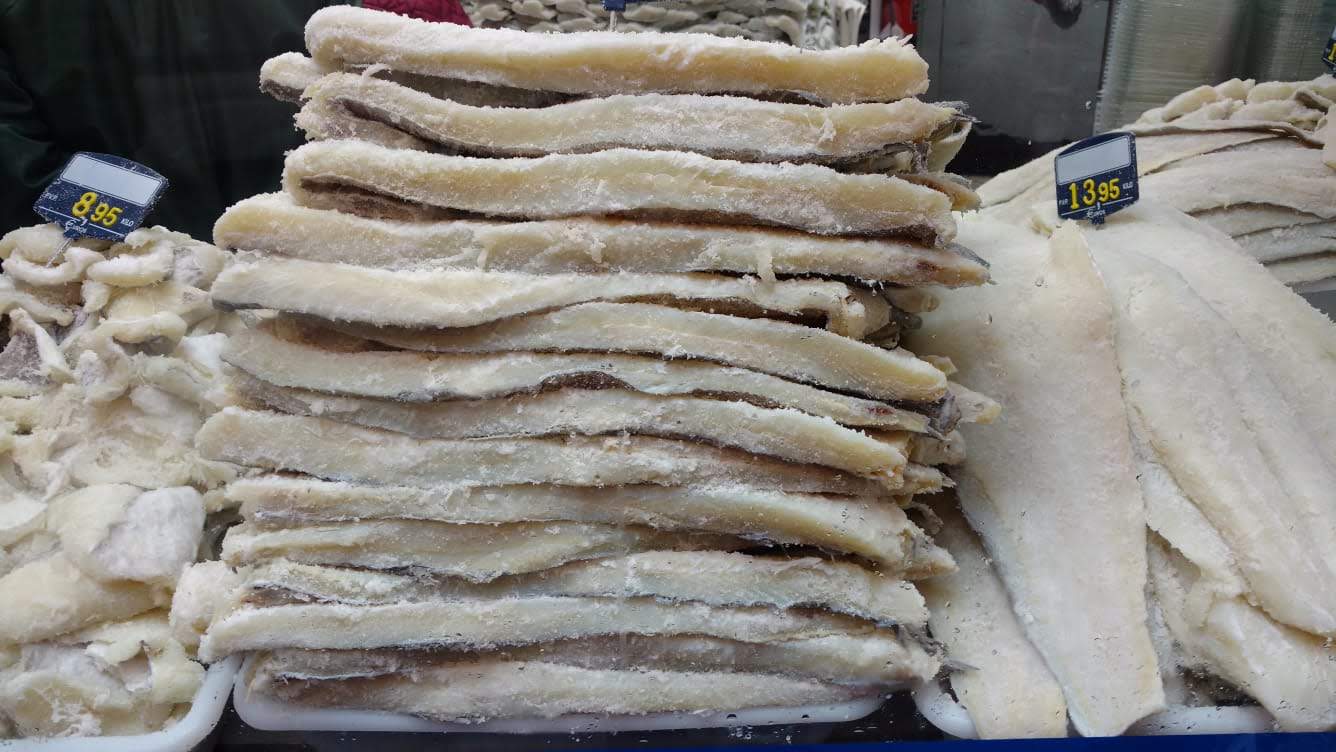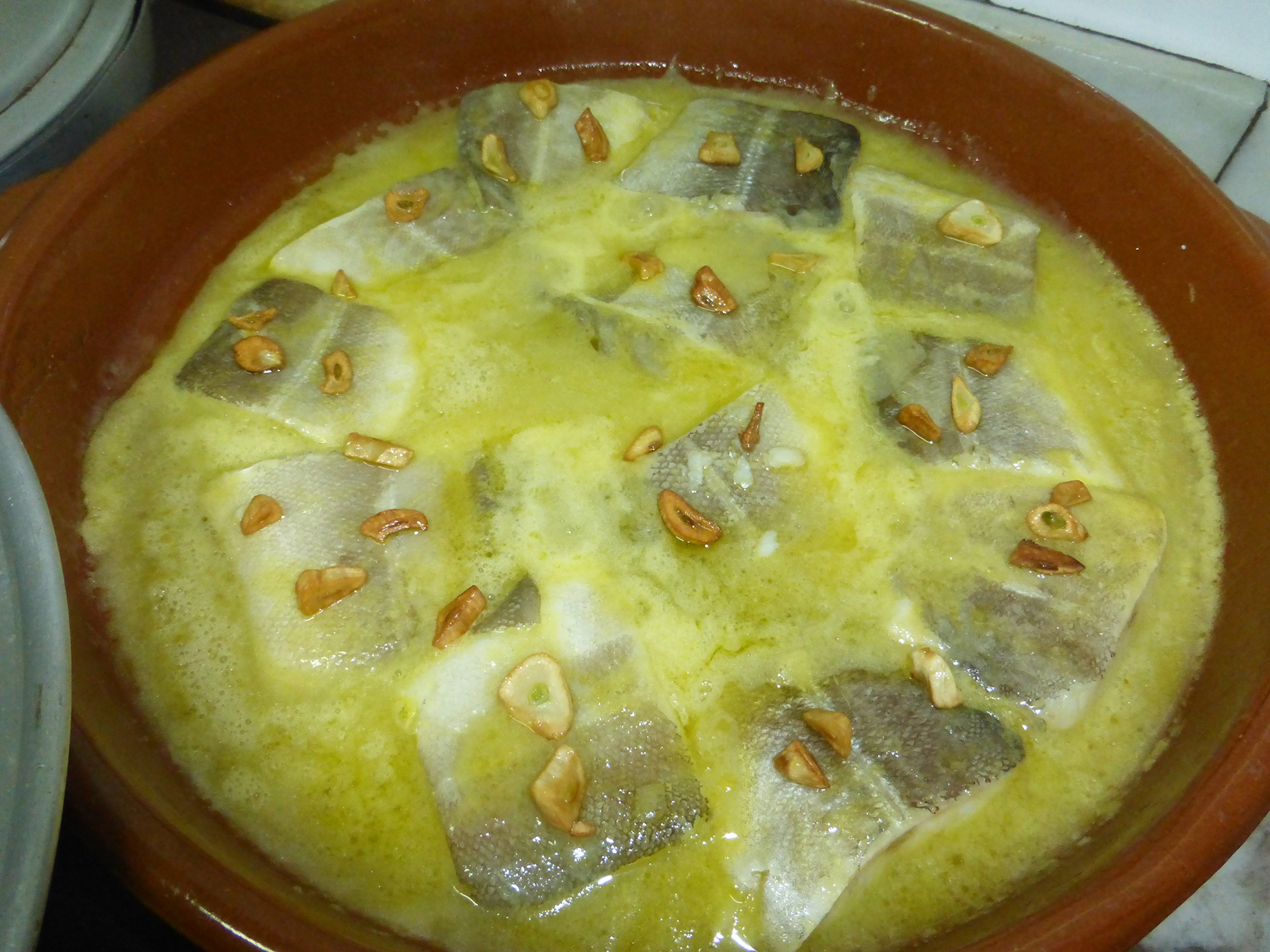Basque ethnography at a glance

Salt fish for sale. Joseba Erkoreka. Labayru Fundazioa Photographic Archive.
My mother was a good hand at cooking salt fish, makailaoa, in Bizkaia Basque. Or practice might make perfect. The fact is that we used to eat salt fish regularly, and it would be she who bought, desalted and cooked it.
The Vikings are said to be the first to preserve cod by drying and in their travels brought it with them. Over the centuries the harvest, processing and commercialization of cod became a lucrative business. The Basque fleet fished for cod twice a year in waters off Newfoundland, some reaching as far as Greenland and North America. Hundreds of tons of cod were caught, beheaded, gutted and salted onboard. Fish processing continued ashore, upon return, in the codfish-drying plants.
Salted and dried cod would suit any pocket. Believe it or not it was considered as ‘food for the poor’ and could easily be found in specialized shops and groceries. Salt-cured fish hanging somewhere in the kitchen were a common sight in rural homes.
The religious precept of abstinence from eating meat did have a significant impact on the traditional dietary habits during certain seasons and days of the year, and more specifically in regard to salt fish. All Fridays in the year, all Fridays and Saturdays in Lent, and the eves of major festivities were days of fast in very former times. The restriction eased with time, at least in our home, where, as I recall, we fasted every Lenten Friday, especially on Good Friday, Bariku Guren egunean.
Salt cod used to be a staple food on meatless days and a favourite for Good Friday. Nevertheless, the wide variety of ways to prepare it suggests its consumption was deeply rooted, particularly among the poorer households, any other day of the year. Salt fish was also served on occasions, such as threshing, pig slaughter and other communal gatherings, along with other foods, either for breakfast, lunch or dinner.
Before it can be cooked salt cod ought to be soaked in very cold water for one to three days, changing the water two to three times a day, in order to rehydrate it and remove the excess salt. The process of desalting required time and attention, and it was said to be crucial to the best tasting salt fish. I remember my mother used to pry off a tiny little piece from the meatiest part and tasted it for salt.

Salt fish in pilpil sauce. Akaitze Kamiruaga. Labayru Fundazioa Photographic Archive.
Next the salty water was drained off and the fish transferred to a pan and covered with fresh water. It was set on a high heat, without letting it boil, until a nice layer of foam appeared on top. Portion by portion, the cod was drained by hand, when cool enough to handle, and placed on a clean cloth. It was then ready for use in any recipe.
Its versatility allows for a thousand ways to cook codfish: Bizkaia style —simmered in a rich dried pepper sauce—, in pilpil sauce —a thick emulsion of olive oil and garlic—, flaked and fried with garlic, with red roasted peppers, with tomato sauce, in a soup with potato and leek, in omelette… More often than not it was simply roasted on the hearth or stove —makailao errea, they called it—, seasoned with raw olive oil and typically accompanied by cornbread, as a light morning, afternoon or night meal.
With the development of means of transport fresh seafood began to reach inland populations. Later on, refrigeration made home preservation of fresh food possible. And overfishing of cod caused the collapse of the stocks in the grand banks of Canada. That is how salt fish lost some of its popularity, besides that its price rose, and yet it is still highly appreciated at our best tables and one of the Basque Country’s greatest gastronomic treasures.
Jaione Bilbao – Ethnography Department – Labayru Fundazioa
Reference for further information: Family Diet, part of the Ethnographic Atlas of the Basque Country collection.

